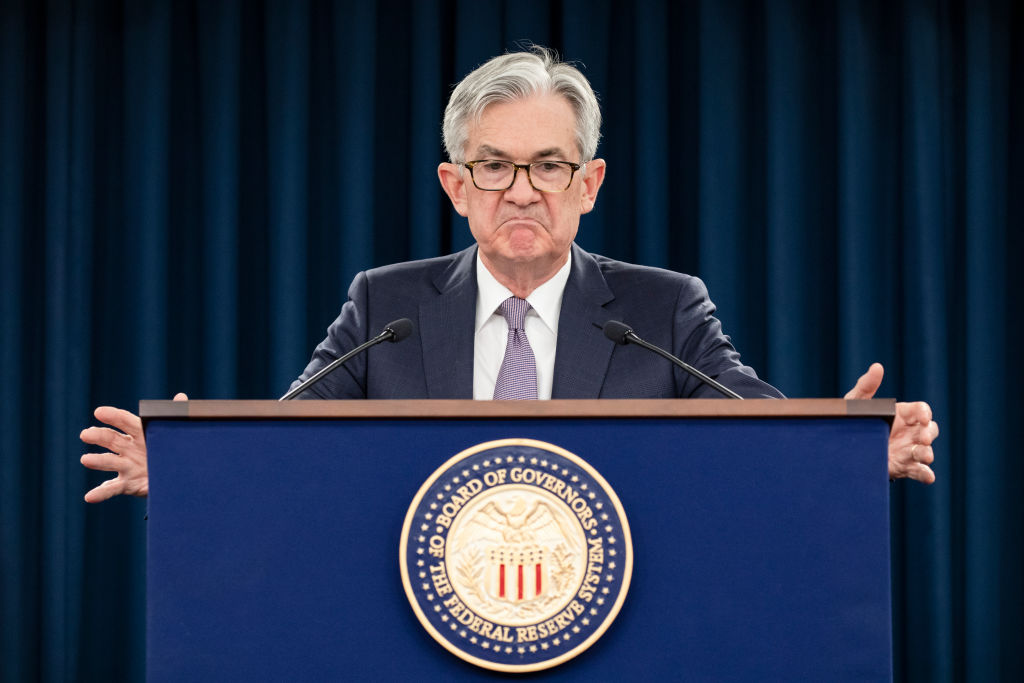Twenty-two years ago, Gladiator was the best motion picture at the Academy Awards, the Arizona Diamondbacks defeated the New York Yankees in the seventh game of the World Series, and President Joe Biden was serving his 28th year in the Senate. Oh, and interest rates were 5.5%. What’s old is new again, as the Federal Reserve pulled the trigger on another rate hike on July 26, lifting the policy rate to its highest level since March 2001. Did the Fed declare mission accomplished or is additional tightening ahead as the Summary of Economic Projections suggested in June?
Federal Reserve Prolongs the Pain
Officials sitting on the Federal Open Market Committee (FOMC) unanimously voted to increase the benchmark fed funds rate by 25 basis points to a target range of between 5.25% and 5.5%, the highest level in more than two decades. Investors were not shocked as the futures market penciled in a quarter-point boost for weeks, despite a better-than-expected inflation reading earlier this month. Policymakers suggested that they would “continue to assess additional information and its implications for monetary policy,” with Chair Jerome Powell, telling reporters that the Eccles Building could raise rates again.
The Fed also revised its FOMC statement by highlighting a stronger economic landscape, although a credit crunch for businesses and households might “weigh on economic activity, hiring, and inflation.
“Recent indicators suggest that economic activity has been expanding at a moderate pace. Job gains have been robust in recent months, and the unemployment rate has remained low. Inflation remains elevated,” the FOMC statement said. “The U.S. banking system is sound and resilient. Tighter credit conditions for households and businesses are likely to weigh on economic activity, hiring, and inflation. The extent of these effects remains uncertain. The Committee remains highly attentive to inflation risks.”

(Photo by Samuel Corum/Getty Images)
During his post-FOMC meeting press conference, Powell revealed that the Fed is not cutting interest rates this year. If the central bank slashes the terminal rate in 2024, the final call will be made on how “confident” officials are. At the same time, Powell anticipates that inflation is unlikely to return to the Fed’s 2% target until 2025, suggesting that the institution is ready to embark upon an easing campaign even with inflation above its preferred level.
Still, Powell assured the press that fighting inflation was the Fed’s primary objective, warning that failing to rein in rampant price pressures, even at the risk of decimating the labor market, would have widespread consequences for the nation.
“The worst outcome for everyone, of course, would be not to deal with inflation now [and] not get it done. Whatever the short-term social costs of getting inflation under control, the longer-term social costs of failing to do so are greater and the historical record is very, very clear on that,” said Powell. “If you go through a period where inflation expectations are not anchored [and] inflation is volatile, it interferes with people’s lives and with economic activity. That’s the thing we really need to avoid and will avoid.”
As Powell typically does at these news conferences, he offered some mixed messages. On the one hand, he noted that the central bank “can afford to be a little patient” as officials follow the data and determine the next course of action. On the other hand, the Fed chief asserted that the Fed needs to be more restrictive for longer until inflation comes back down to the 2% goal at a sustainable and long-term pace. So, does this mean another rate hike is coming? While Powell is taking a meeting-by-meeting and data-dependent approach to interest rates, investors and market analysts think this was the last one. According to the CME FedWatch Tool, the futures market is indicating that there will be no more rate hikes in 2023, with traders starting to price in cuts in March 2024.
Should You Care?
 Let’s be honest: Federal Open Market Committee meetings, Powell-led press conferences, and Fed minutes are not the most exciting to peruse or watch, especially as whistleblowers talk about the US government recovering “non-humans” or Hunter Biden having a plea deal. It is understandable why most Americans are indifferent to what the more-than-a-century-old institution does. But the Fed funds rate impacts or influences everything in the US economy: investments, mortgages, credit markets, government interest payments, and much more. Consider this, during the coronavirus pandemic, a 30-year fixed-rate mortgage was hovering slightly above 3%. Today, it is between 6% and 7%. Or, as another example, in 2020, annual debt-servicing costs were around $500 billion. Today, they are on track to flirt with $1 trillion, which has lasting consequences for the rest of the budget.
Let’s be honest: Federal Open Market Committee meetings, Powell-led press conferences, and Fed minutes are not the most exciting to peruse or watch, especially as whistleblowers talk about the US government recovering “non-humans” or Hunter Biden having a plea deal. It is understandable why most Americans are indifferent to what the more-than-a-century-old institution does. But the Fed funds rate impacts or influences everything in the US economy: investments, mortgages, credit markets, government interest payments, and much more. Consider this, during the coronavirus pandemic, a 30-year fixed-rate mortgage was hovering slightly above 3%. Today, it is between 6% and 7%. Or, as another example, in 2020, annual debt-servicing costs were around $500 billion. Today, they are on track to flirt with $1 trillion, which has lasting consequences for the rest of the budget.
How We Learned to Love the Lag
Monetary policy typically functions with a lag. So, while the Fed has raised interest rates by 500 basis points since March 2022, the US economy is unlikely to feel the full agony of these 11 hikes for maybe another year. If anyone comes across a prominent bear who expects the sky to fall, this is the reason. Even Chair Powell has acknowledged that the nation has yet to endure the intensity of higher rates, especially since they only recently turned restrictive. Ultimately, as the country takes on more debt, the labor market cools down, and inflation remains elevated, the torture of 22-year high rates will be felt.



